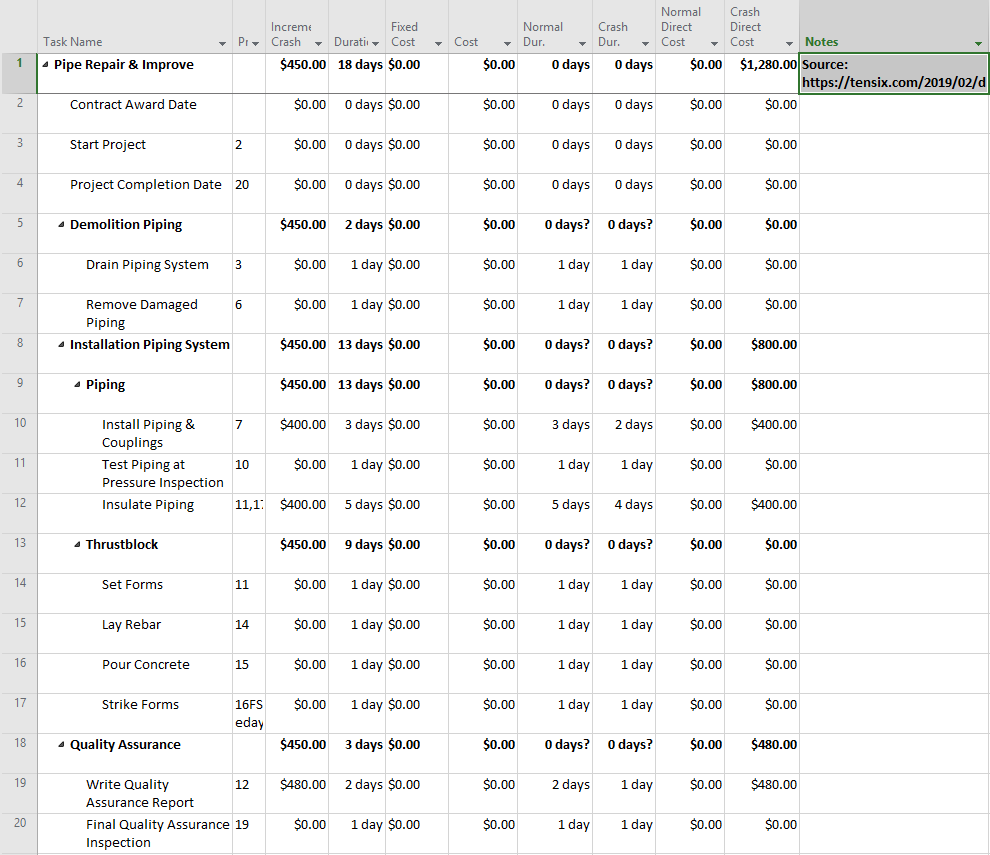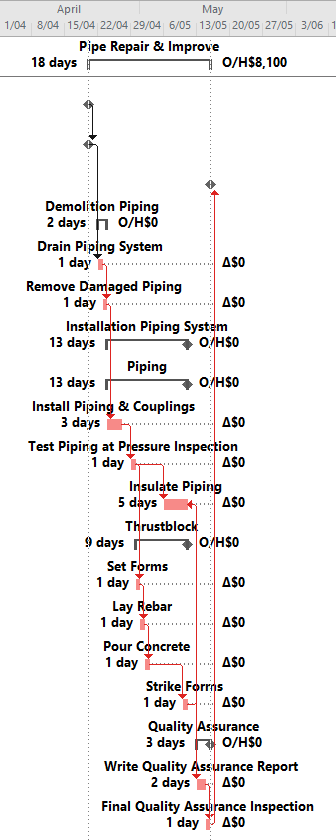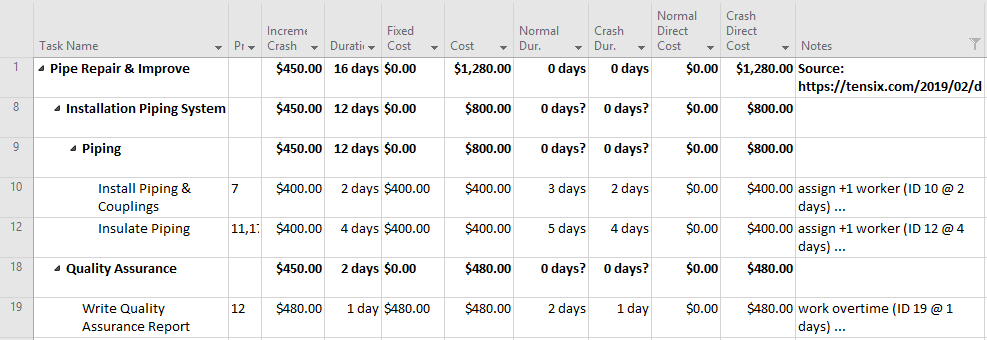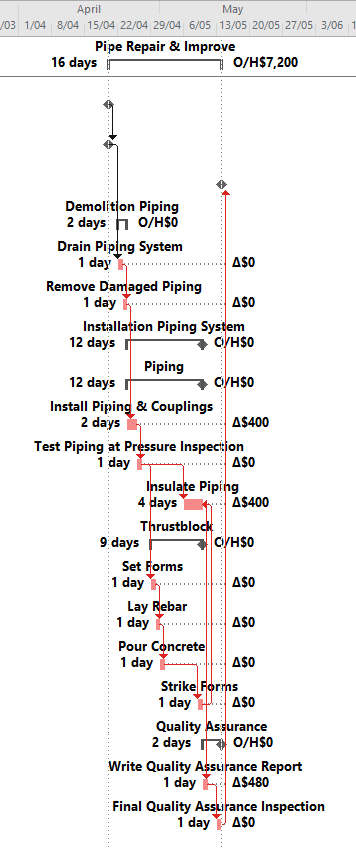Tenth Example – Planning for Piping Repair & Improvement Project
If the Project Manager has a costed project schedule and wants to know options for minimising the project duration, what advice should the Project Planner provide? Read on to see how all key information can be provided through the #TimeCostCurves program.

Figure 1: Costed project schedule setup for producing the TimeCostCurve.
Setup assumptions for TimeCostCurve program:
| Assumptions: | Assumed Value: | Remarks: |
|---|---|---|
|
$450 / day | |
|
$50/hr | |
|
$120/hr | |
|
$0 | Relevant costs for decision-making are the changes in costs due to changes in task durations. |

Figure 2: Normal conditions schedule.


Figure 3: TimeCostCurve with Task ID data points
Advice based on TimeCostCurve program:
| Schedule: | Duration (days): | Cost ($): | Remarks: |
|---|---|---|---|
| Normal schedule | 18 days | $ 8,100 | NB. Sunk costs ignored. |
| Least-cost schedule | 17 days | $ 8,050 | |
| Least-time schedule | 16 days | $ 8,480 | |
| Fully-crashed schedule | 16 days | $ 8,480 | There is no added cost compared to the least-time schedule (which would be of no benefit since the critical path cannot be further shortened). |

Figure 4: Schedule filtered for expedited activities with reasons.

Figure 5: Least-time schedule